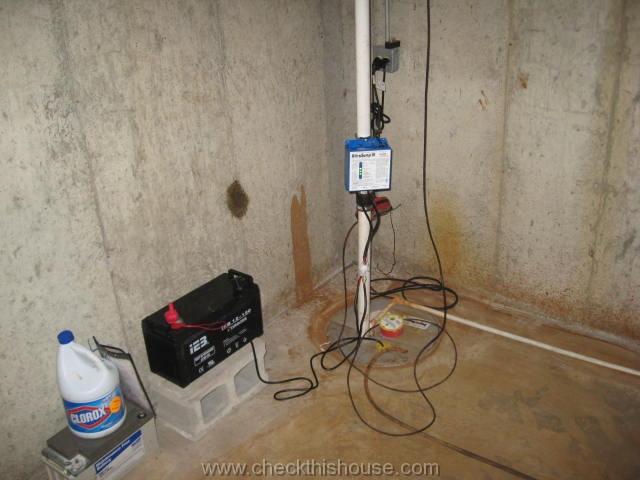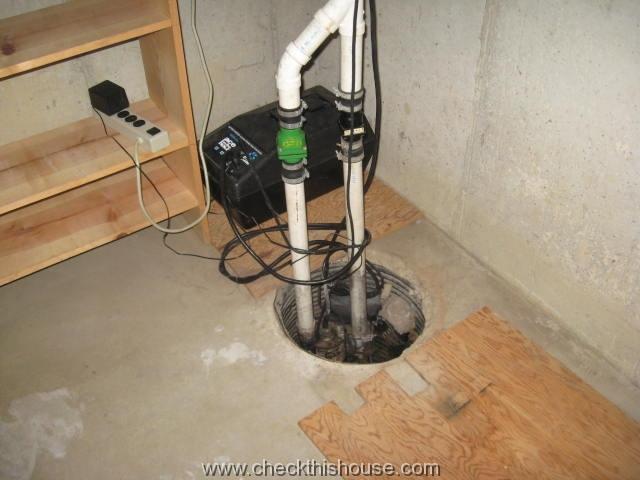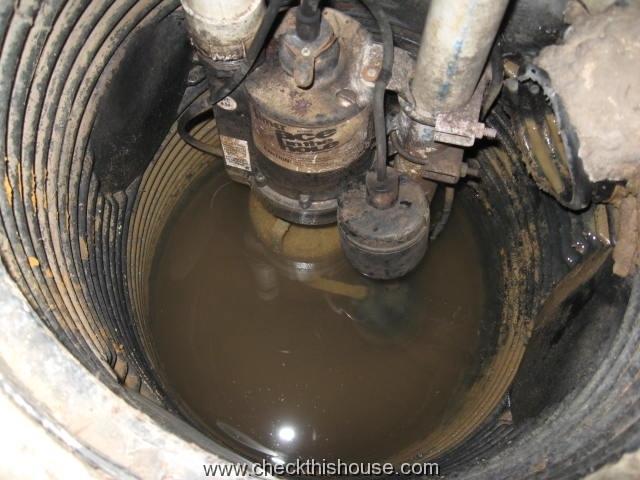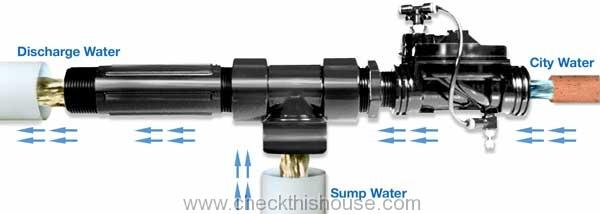It’s in a human’s nature to believe that bad things happen only to others; unfortunately, reality works its own, unpredictable, and mysterious ways.
Any time I see basements with a sump pump and no battery operated backup pump, especially finished basements, I always wonder about calculations.
A battery operated sump backup pump starts around $300.00 and a finished basement starts around $30,000.00 (prices might vary – don’t quote me on that). Because I’m not a salesman and far from it, I think you can trust me – it’s well spent money, and you’re getting a free piece of mind with the pump.
Power outages happen everywhere, and regular sump pump, no matter how good and reliable, will not operate without power; maybe it’s a good time to make a little investment. You have many choices as far as manufacturers and two choices for the types of pumps.
The first one, and the most common type, would be a battery operated pump. The typical setup consists of a pump located inside the sump pump well / pit / basin, and is installed slightly higher than regular pump, with a floating switch setup higher than a regular sump pump activating device. Such setup is required so the backup sump pump kicks in only when the main pump fails.
The second component of this setup is a 12V battery with a controller (many different designs which usually stimulate the price) – I highly recommend installing the sump pump battery and controlling device higher up and not on the floor surface / right next to the sump pump well cover.
Place it on a table, shelving unit, or any other surface suspended above the floor. Such pumps are designed to operate for several hours (it varies between the manufacturers), but sometimes pump discharge might be less than amount of water accumulating in the pit, which might eventually overflow and cause damage to the controls killing your backup pump. Hey … less water in the basement is always better than more water … like you didn’t already know that 🙂 .
The last piece of the equipment would be a switch (also few different types available) that activates the pump – the most common being a floating device attached to the sump pump body. Others are mounted above the well and connected to the floating device inside the sump pump well with a long stick that rises up with water and activates the switch.
It would be also a good idea to install an audible alarm (they are very cheap, and sometimes “life savers” starting from around $10.00 a piece) and place it on the floor, next to the sump pump well.
The second type of a backup sump pump (I honestly haven’t seen one installed – US patent for this device was issued in March 4, 2003) is the Water Powered Sump Pump (Manufacturer website – just one of them). The main advantage of this device is that it doesn’t require any electric power source and needs no maintenance (at least this is what they claim).
The basic requirement for Water Powered Sump Pump is 3/4″ size water supply and pressurized municipal water supply.
What this basically means is that the water main (your water service pipe from the street to your house) is at least 3/4″ in diameter, and your water supply is under constant pressure maintained by your local utility company – if you have your own well, with a pump depending on electricity, this setup might not work for you because during power outages, your well pump will stop operating (unless you have your own power generator).
Also, if the water distributing pipes inside your house is galvanized and old, you’d probably have to run a new line from the main shutoff valve to the pump (3/4″). The way this pump works is very simple: the pump is activated by a floating device / switch (just like any other pump, except this one doesn’t require electricity).
The switch opens the pump valve and starts discharging City Water to the exterior (that’s the bad part – every time this pump kicks in, you’re loosing drinking water), and then the water flow creates a vacuum that sucks in the water accumulating in the sump pump pit and discharges it to the exterior.
So it is pretty much “Set it and forget it” … I forgot who created this phrase to give them credit … Prices for this device start at around $300.00, same as the battery operated sump backup pump … so which one should it be?
Our whole life is about taking chances, so do a little calculation – if you have an unfinished basement or crawlspace, with nothing valuable in it, and your sump pump well stays dry all the time, even during heavy rain storms, there is a big chance that you don’t need a backup sump pump at all.
If your basement sump pump kicks in once in a while in described conditions, get one of two backup sump pumps. If you have a finished basement, then replacing flooring, walls, and furniture (in case of flooding) would cost several times more than getting a couple of sump pumps … what’s there to think about?
Final thoughts:
– If you get this water powered backup sump pump, make sure that it includes backflow prevention system – it prevents sump pump well water from mixing with City Water and some jurisdictions will require it.
– Make sure that your local jurisdiction allows water powered backup sum pump installation
– If you have an empty basement with a water heater and furnace installed in it, and it floods, you may need to replace both appliances – basement backup sump pump is something that could prevent it from happening.






The idea of using single receptacle for a sump pump (it should also have its own dedicated circuit) is to prevent the pump electrical circuit from being overloaded by any other electrical devices that somebody could plug in into the extra / duplex type outlet. Using anything (splitter, extension cords) between the receptacle and the sump pump cord plug might also void manufacturers warranty or cause the pump to malfunction. Splitters and extension cords could have lower ratings / parameters than the minimum required by the sump / back-up pump manufacturer and that of a regular electrical outlet. They also (very often) become loose when plugged into the wall receptacle and under the weight of the plugs, wiring, and sometimes heavy transformers cause damage to the terminals inside the outlet, causing it to short the circuit.
That’s why sump pumps / back-up pumps are required to be plugged in directly into the electrical outlets. I would just ask for a few quotes from local electricians – if it’s just the matter of a single to duplex receptacle + double cover replacement, for an experienced professional it shouldn’t take more than 5 minutes.
My sump pump is plugged into an outlet with only 1 outlet. I have recently installed a back up system, that needs to be plugged in so the battery can re charge. I don’t want to pay an electrician, so can I buy a splitter to plug into the outlet that way I will have to outlets in one?